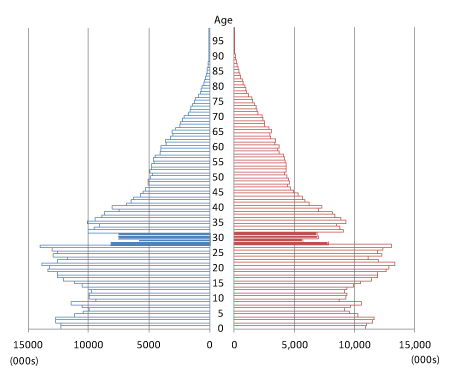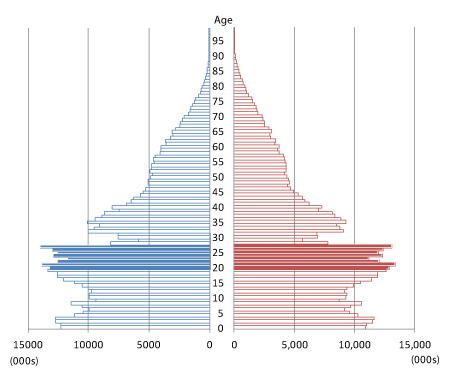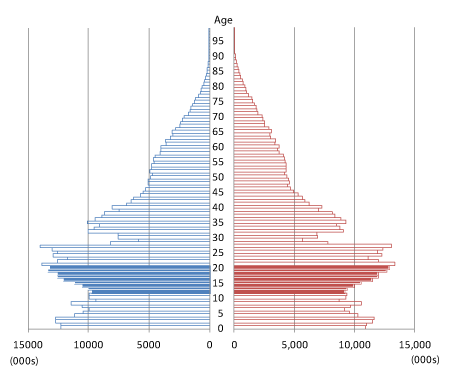Population history (cont.)
China
![]() Similarly, events from China's history are evident in China's age-sex structure in 1990. Click on the highlighted text on the right hand side to display these.
Similarly, events from China's history are evident in China's age-sex structure in 1990. Click on the highlighted text on the right hand side to display these.





The effects of Mao Zedong's 'Great Leap Forward', in which forced industrialisation and failed agricultural policies lead to severe famine, can be seen by the indentation at ages 32-29 (1). The cohorts at these ages in 1990 were those born during the years of the Great Leap Forward (1958-61). They are smaller than previous years cohorts due to a reduced number of births and increased infant mortality, both resulting from famine.
After the Great Leap Forward births once again increased, leading to larger birth cohorts which can be seen as a bulge in the population pyramid (2).
Fertility began to decline in the 1970s, which can be seen as a gradually deepening indentation from age twenty and down (3) resulting from reduced numbers of births. This reduction in fertility then accelarated from 1979 with the introduction of the one-child policy (4) which restricted most couples to just one child (with some exemptions, for example for rural families).